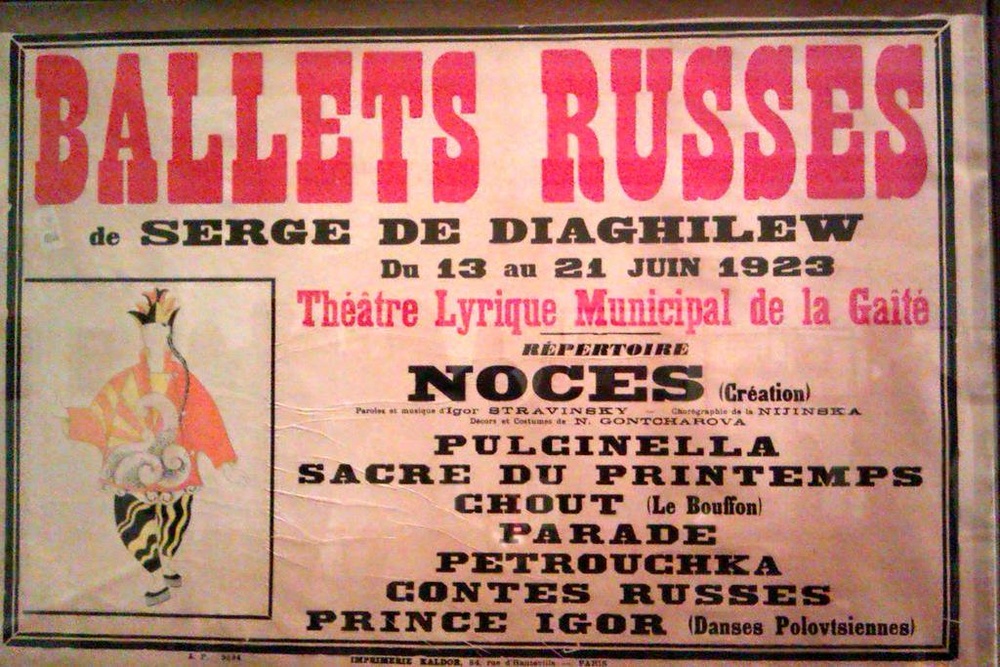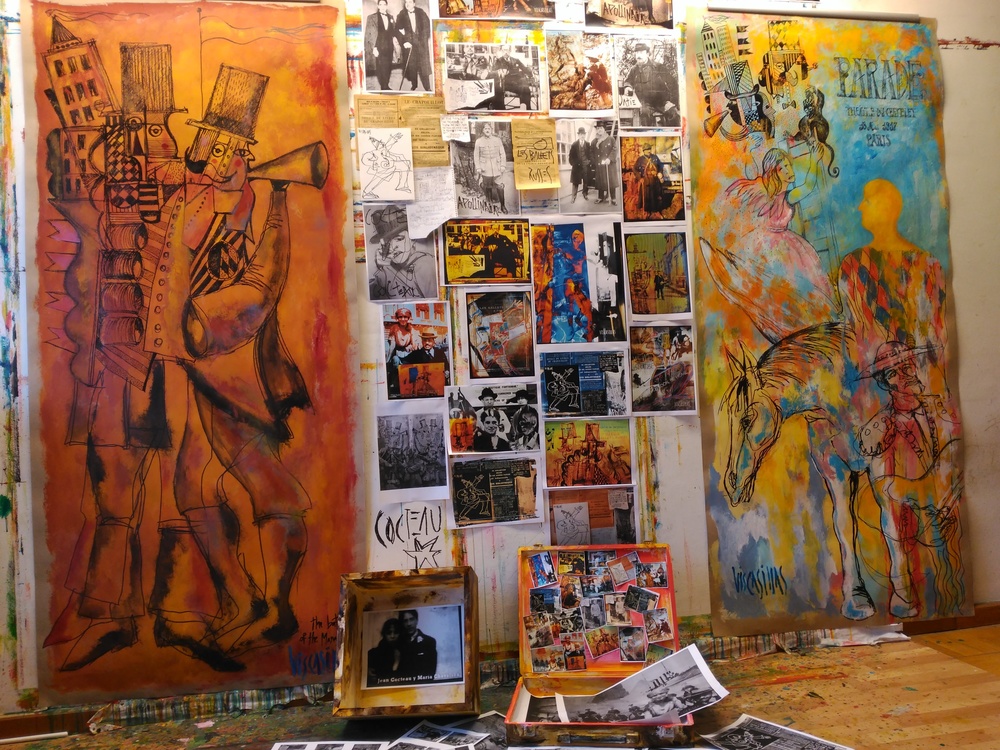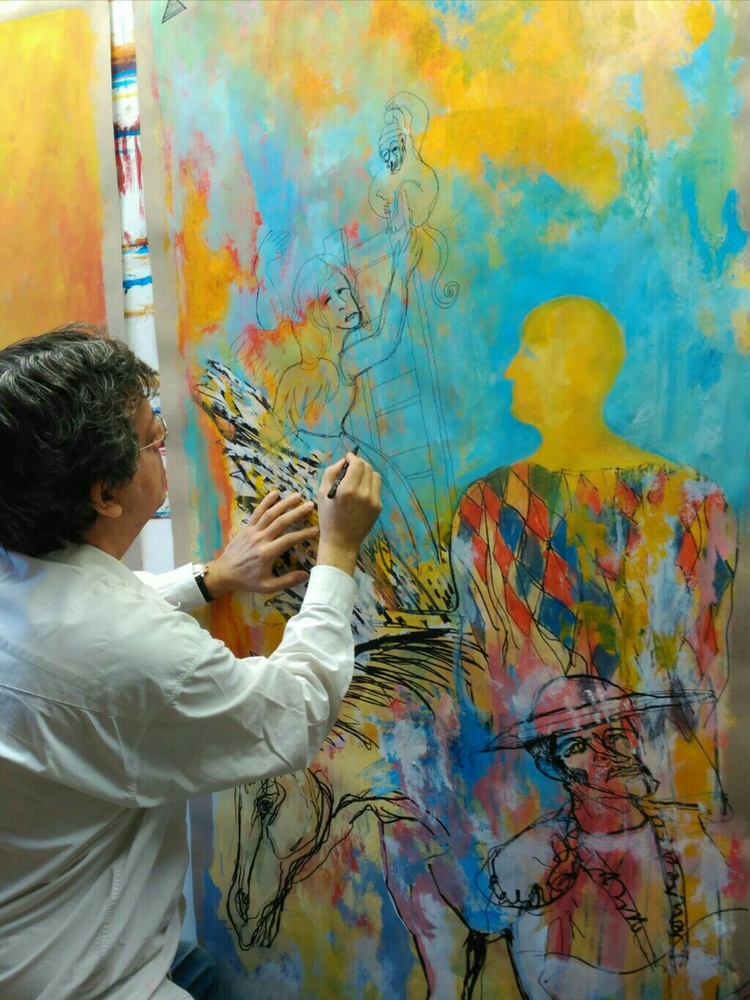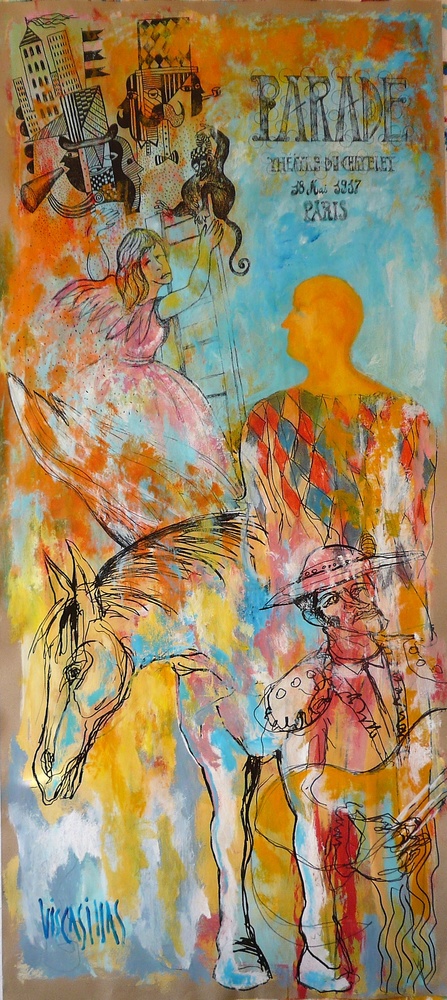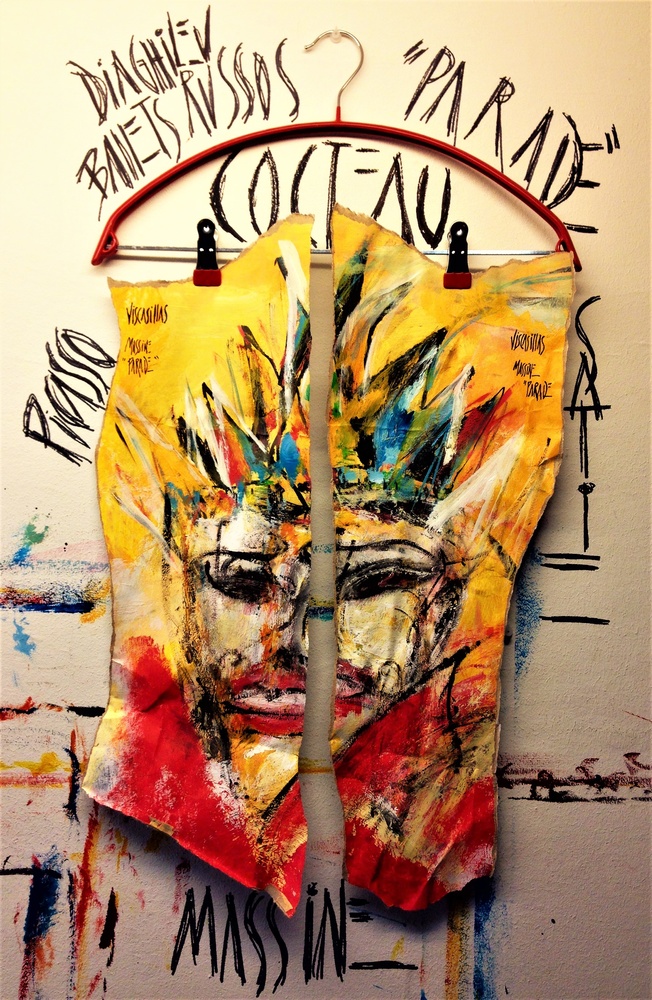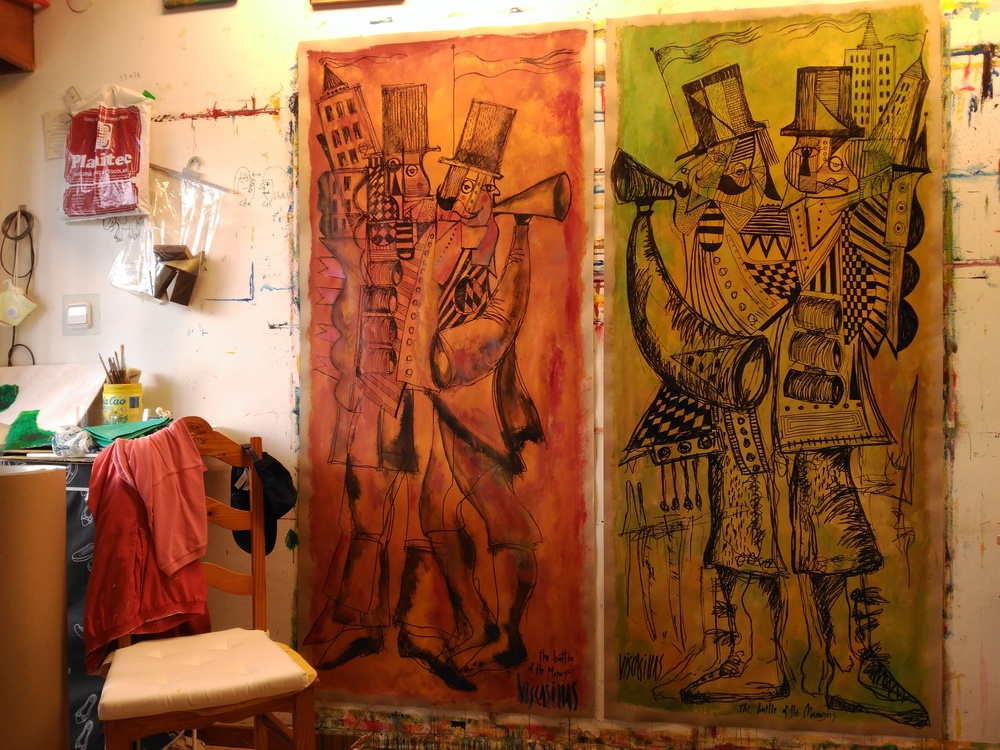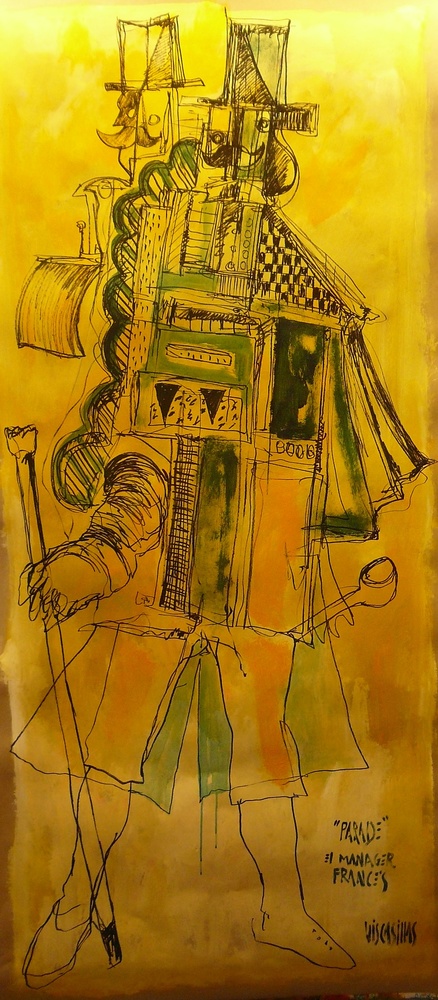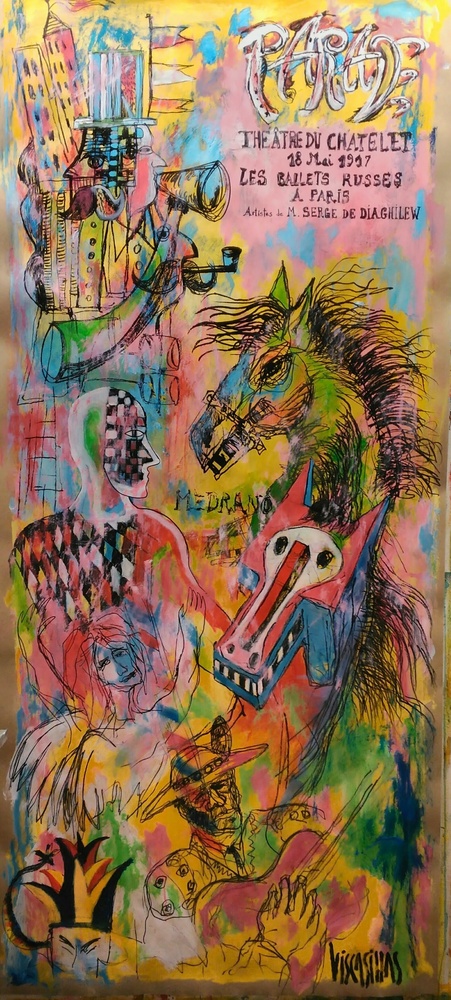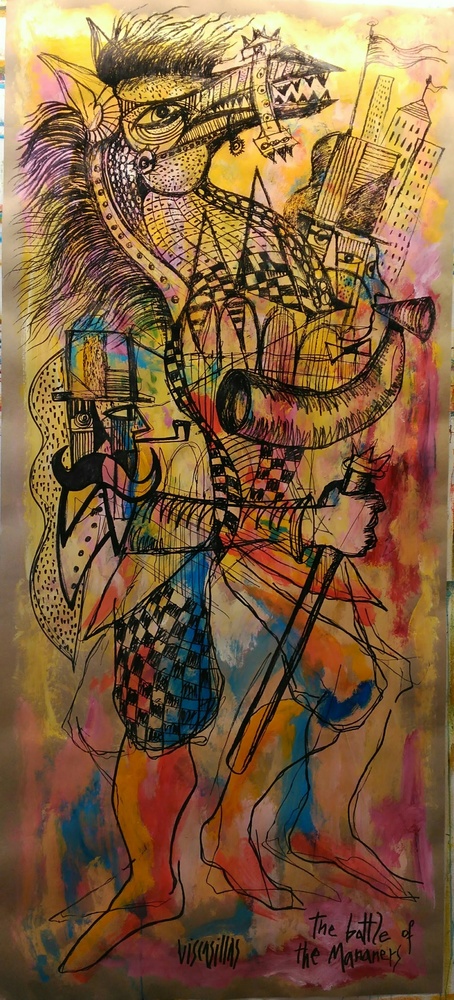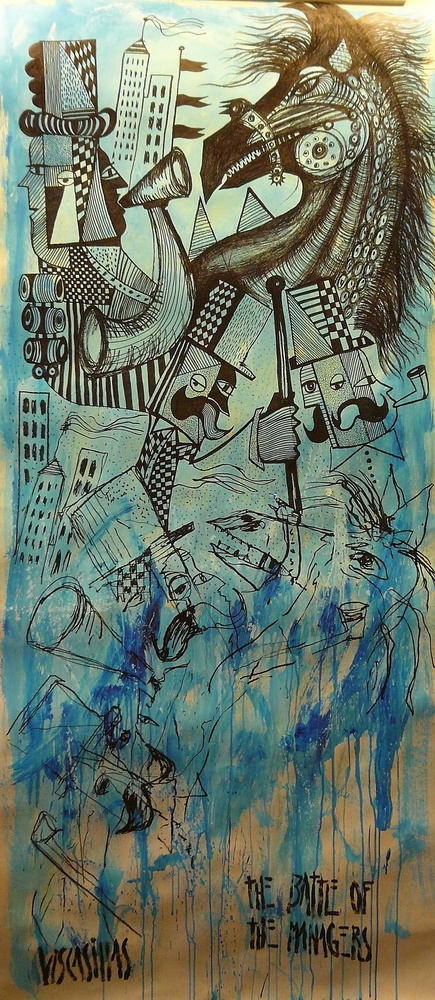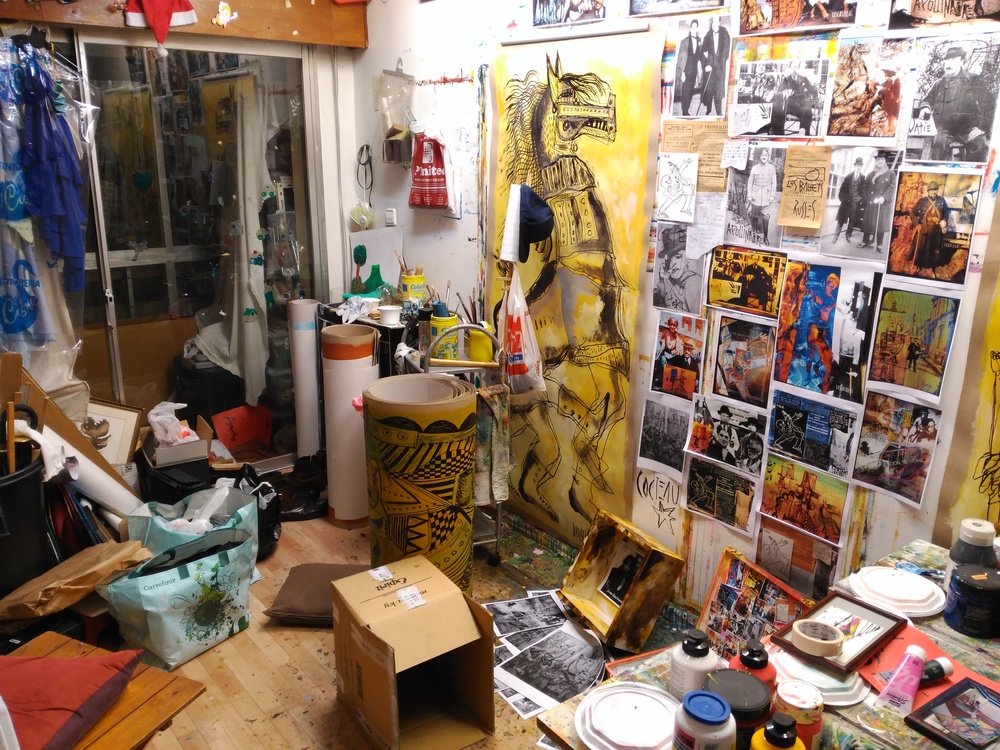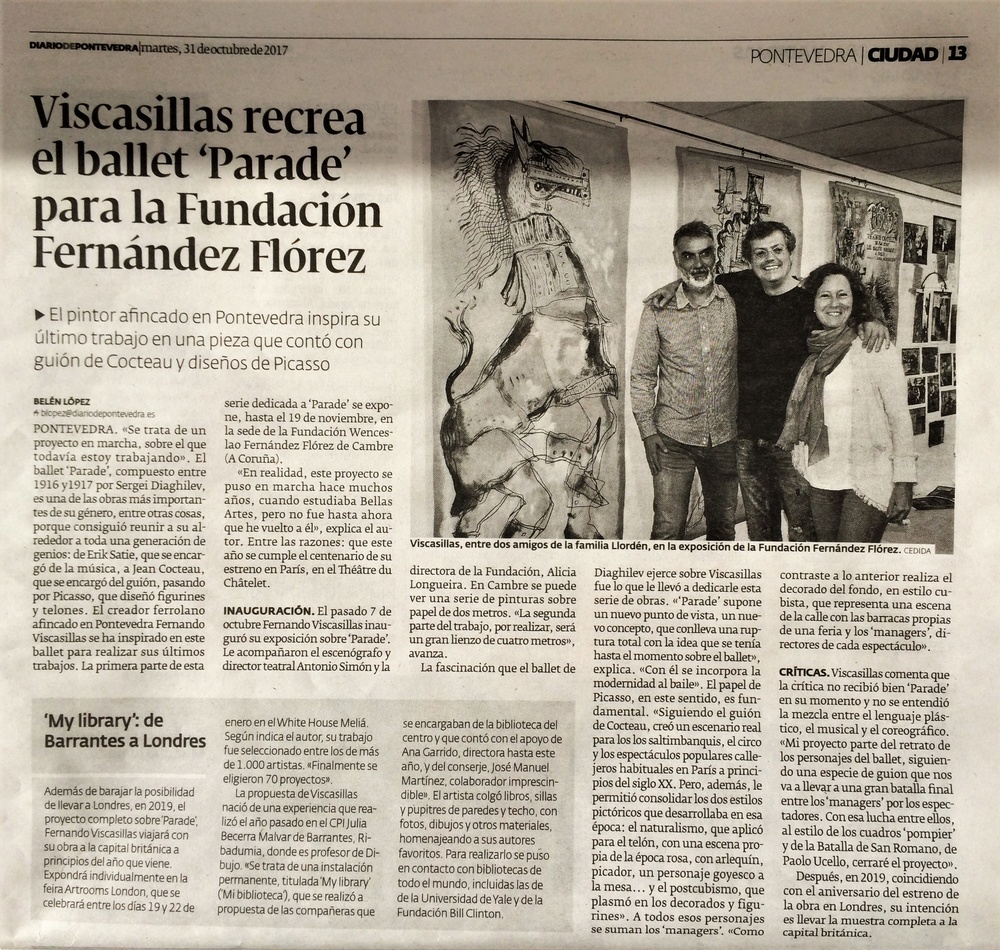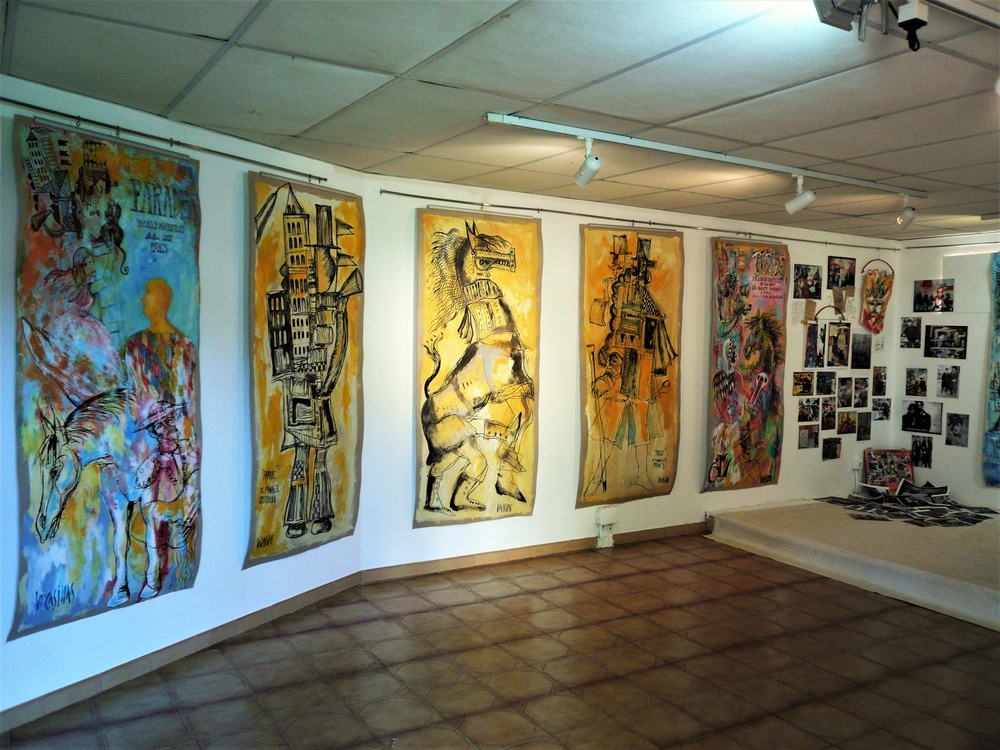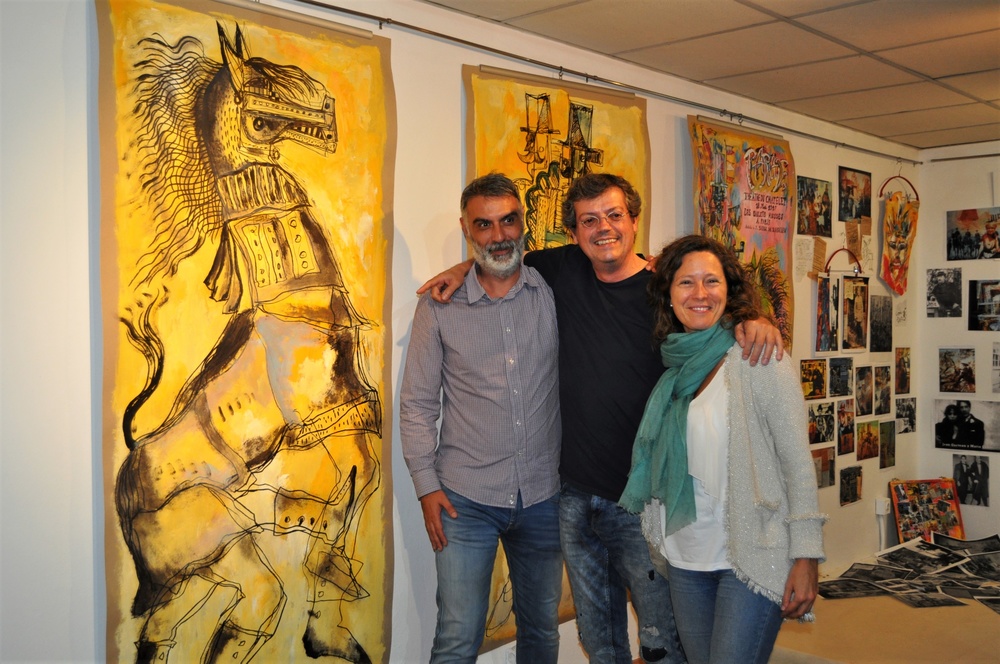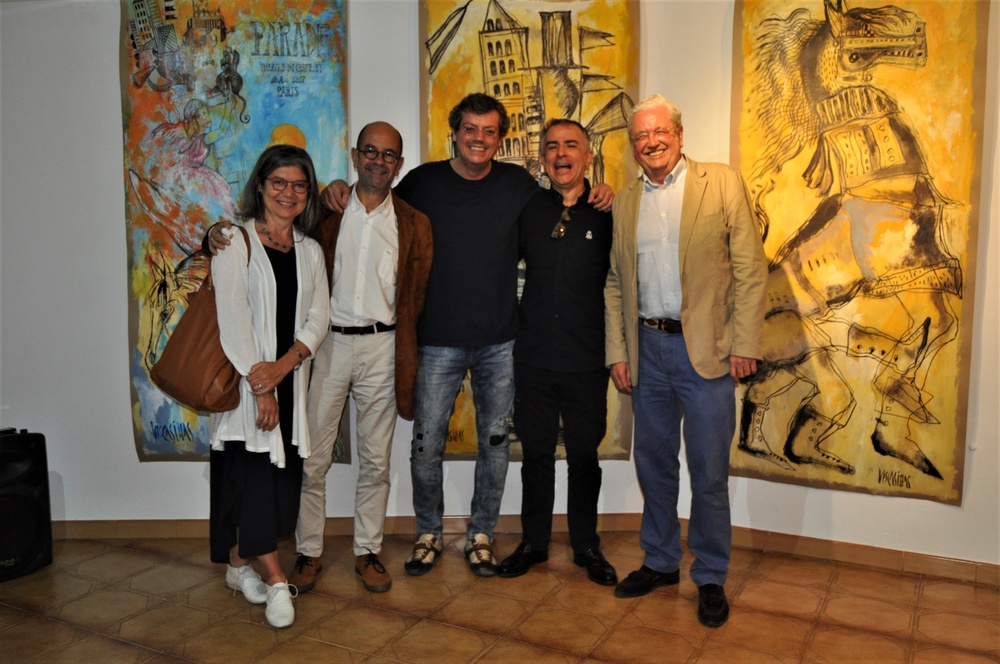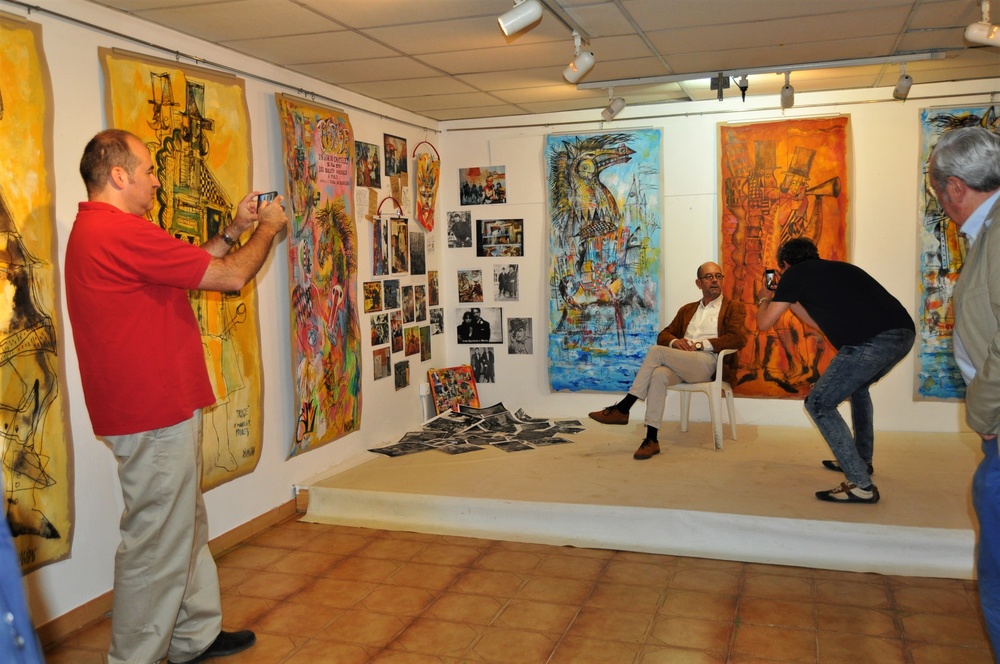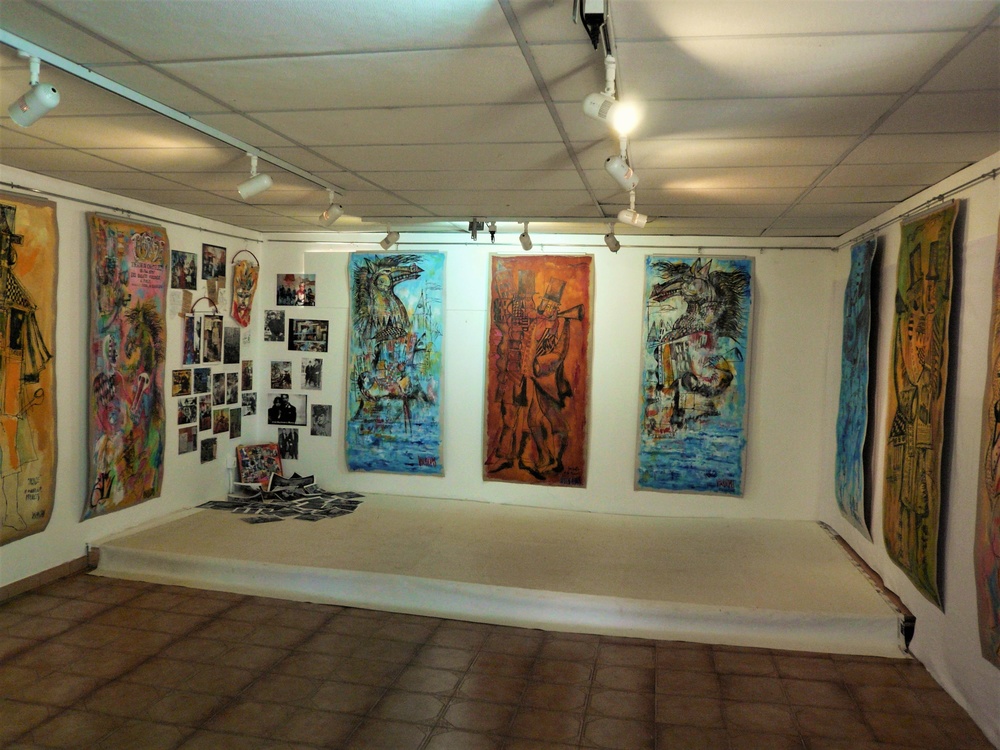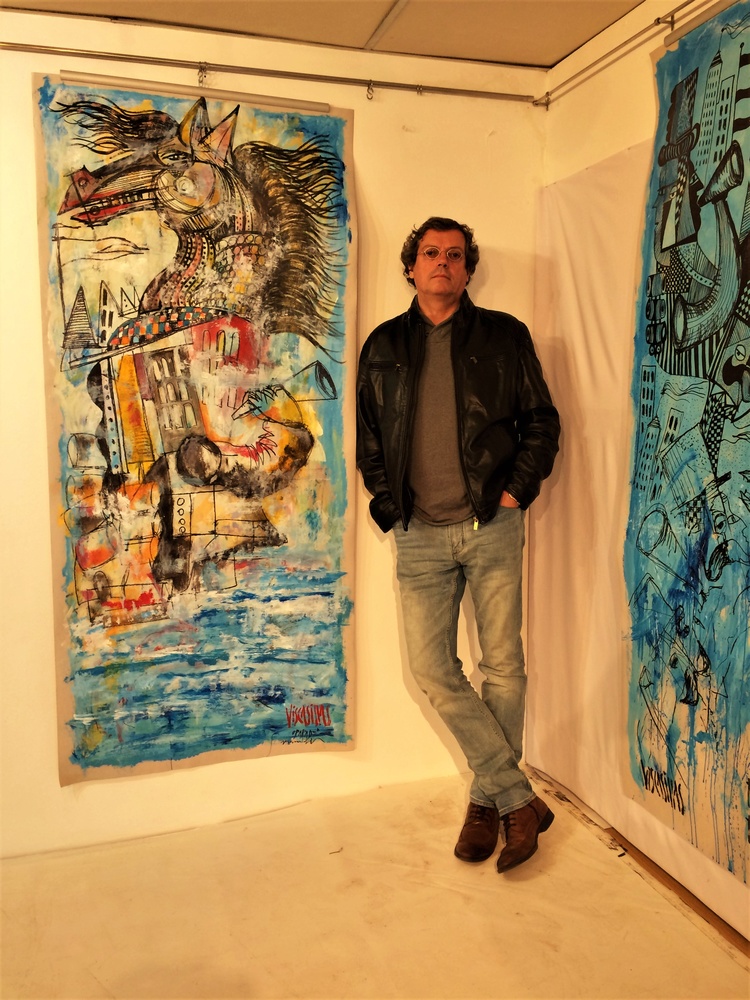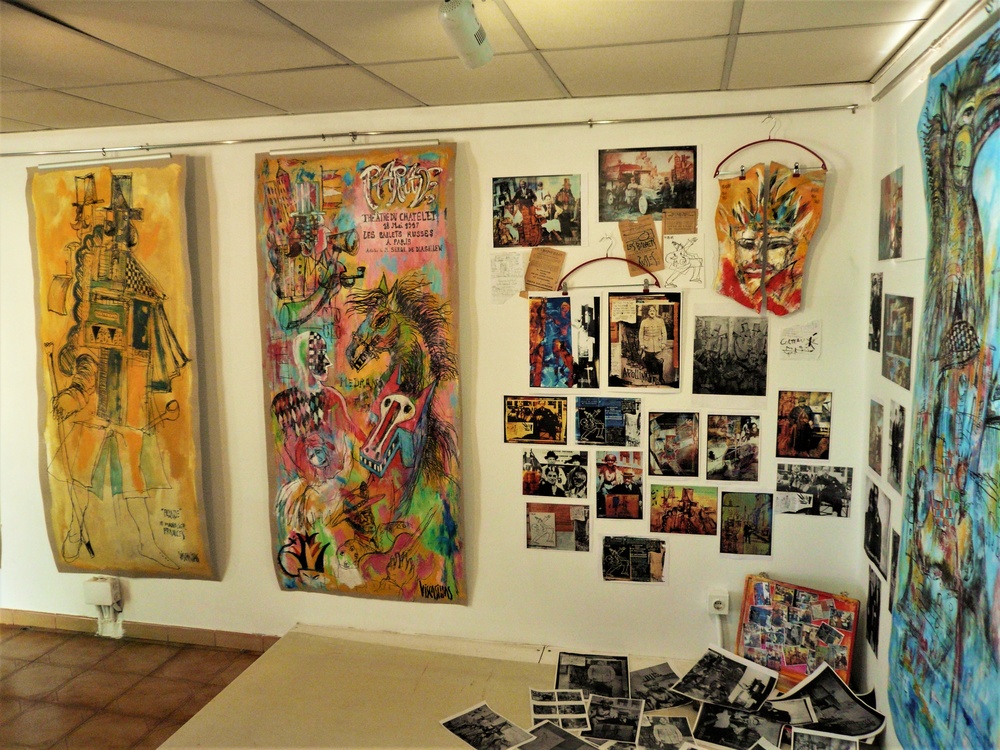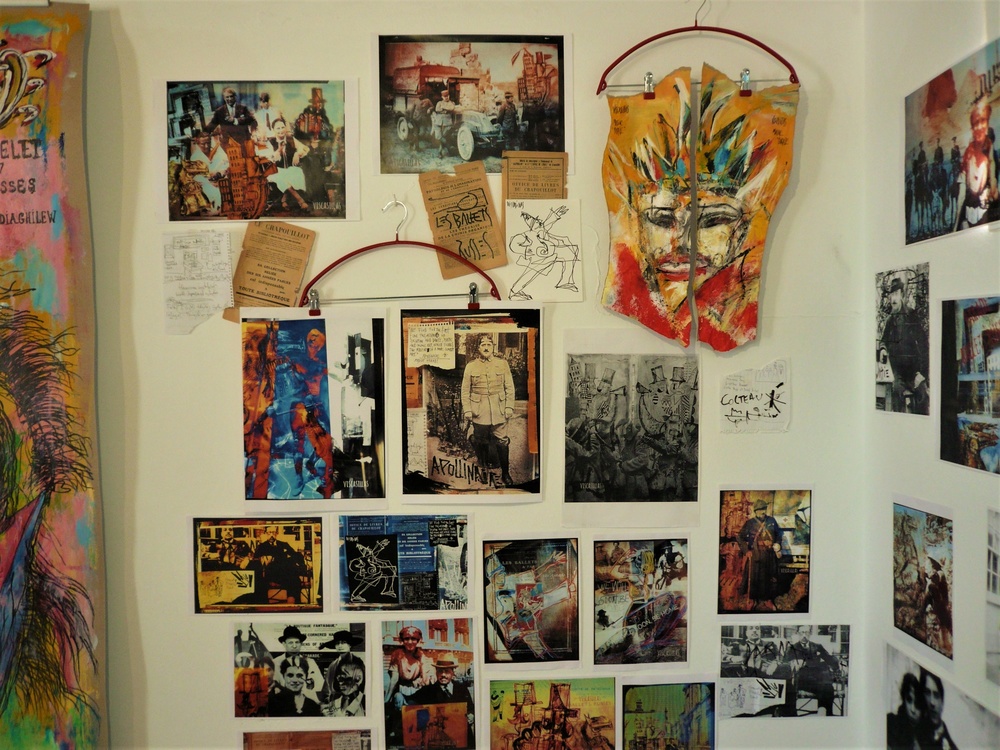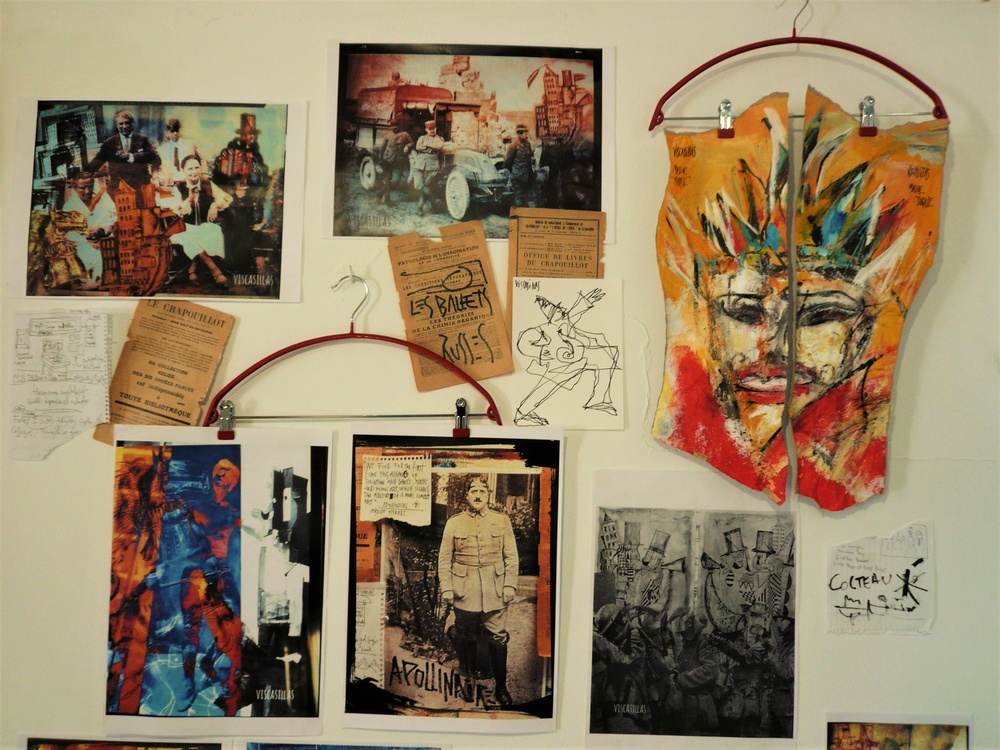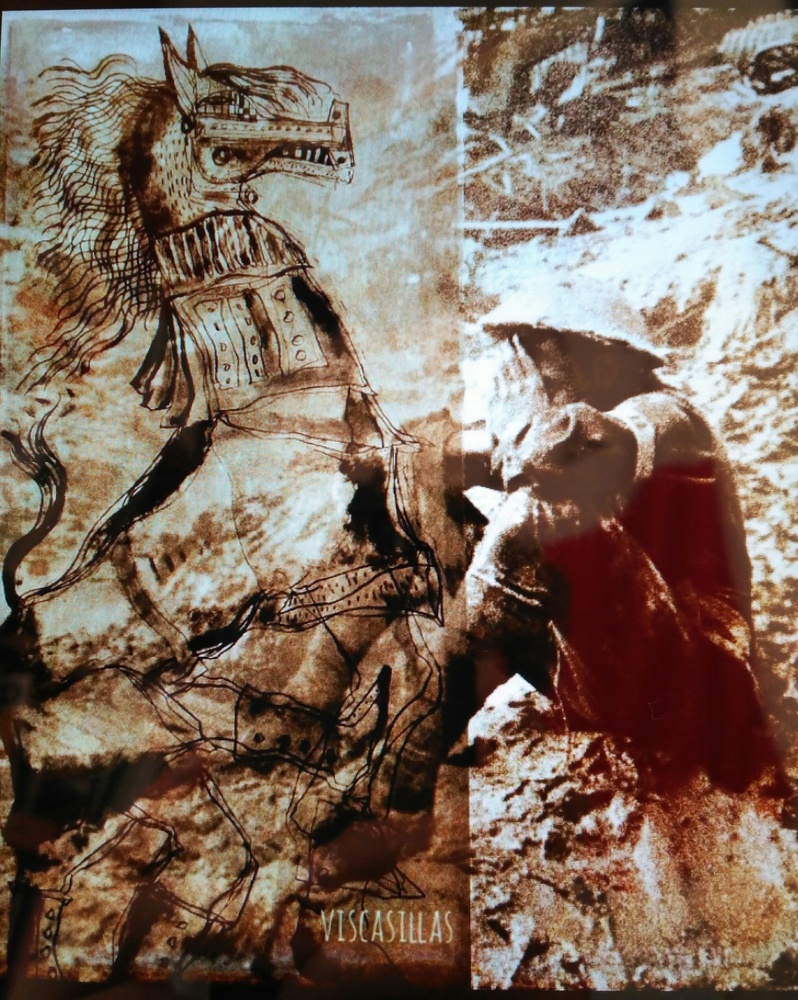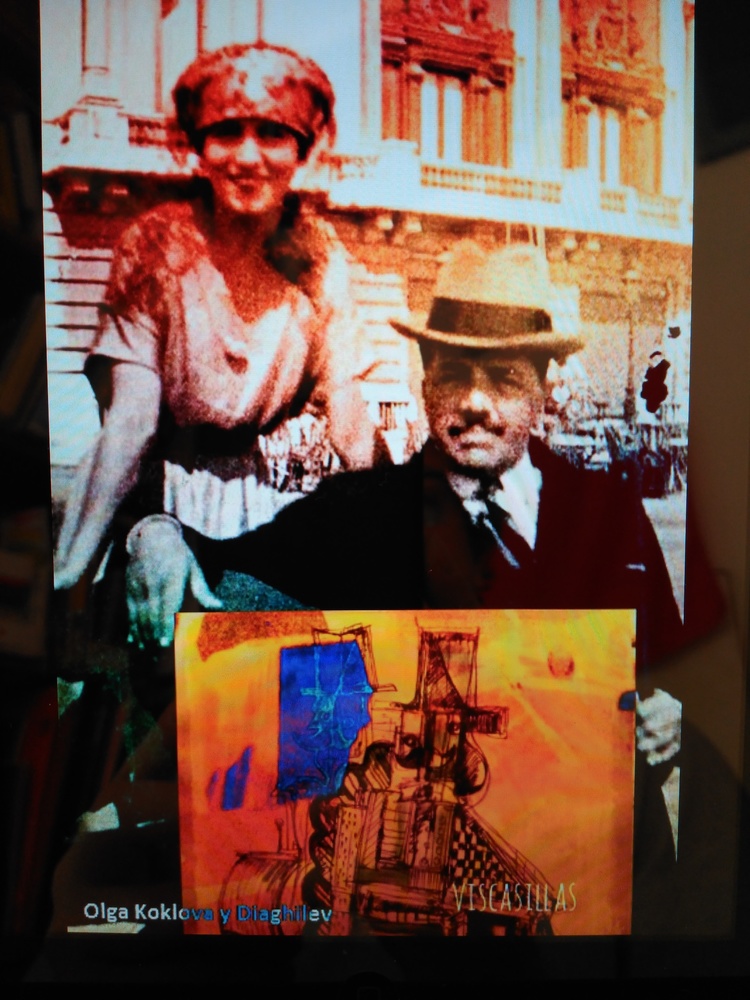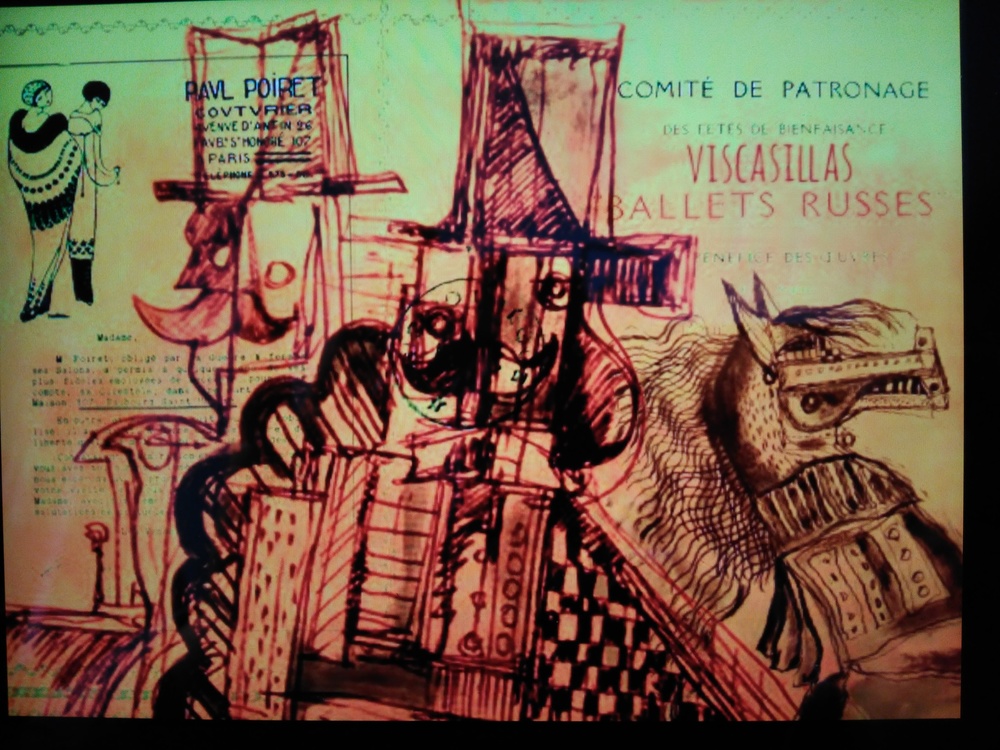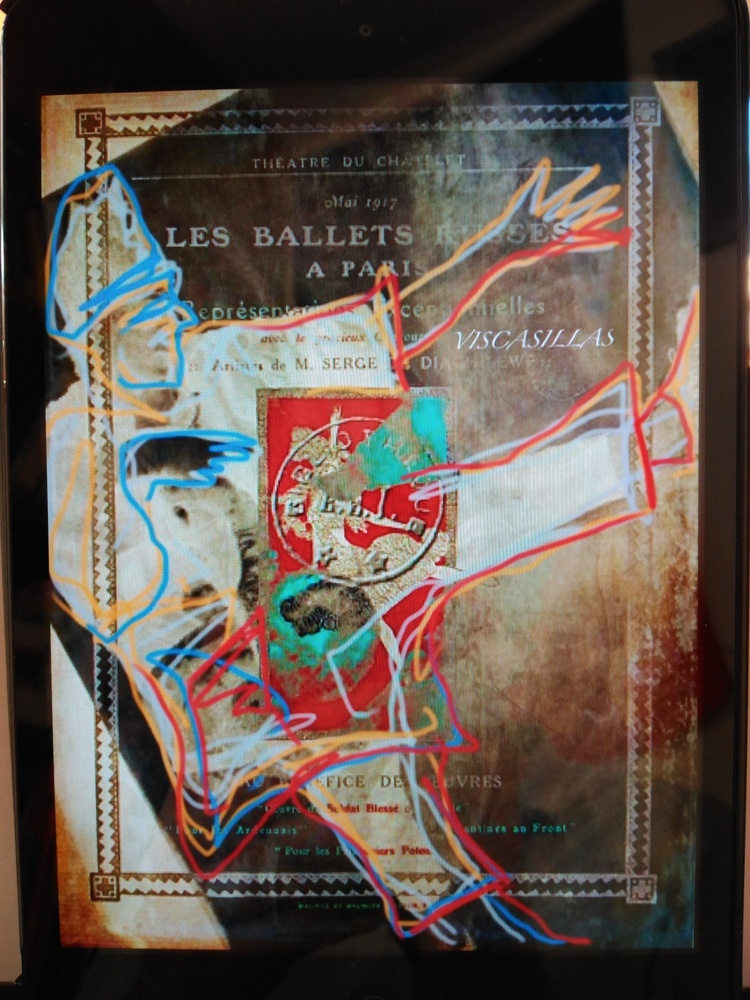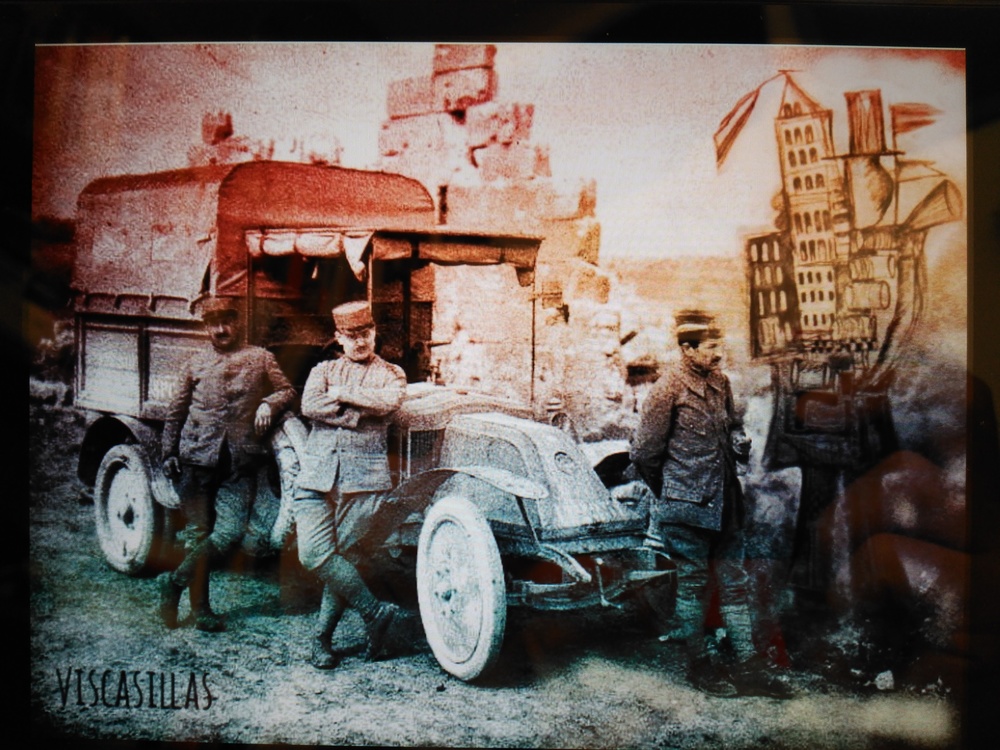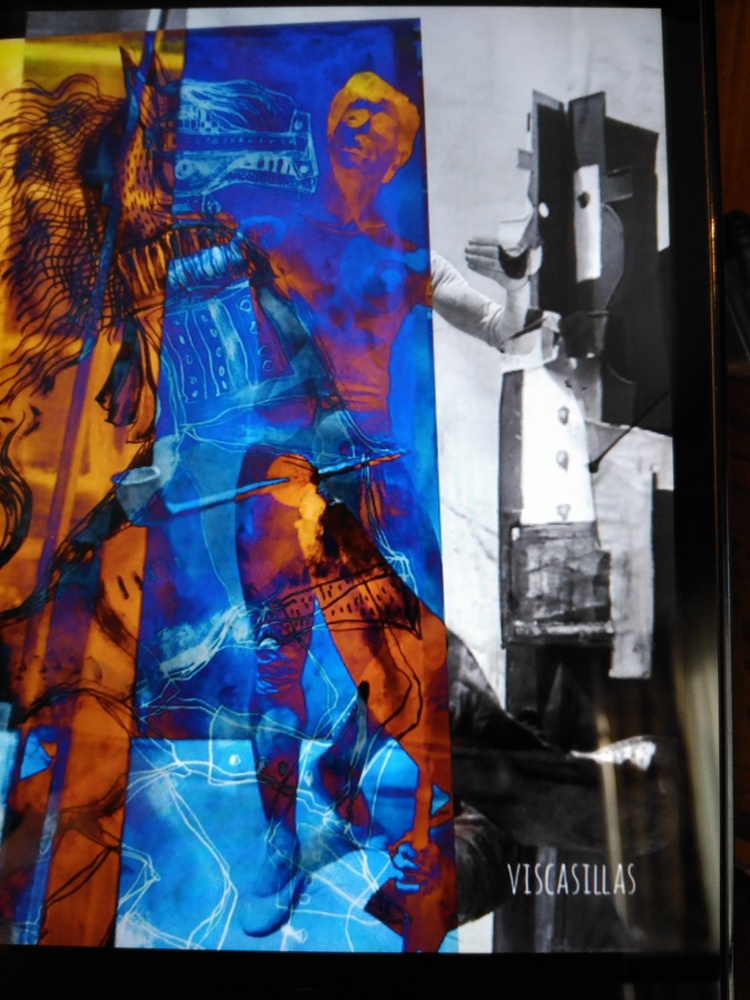FERNANDO VISCASILLAS, Visual artist
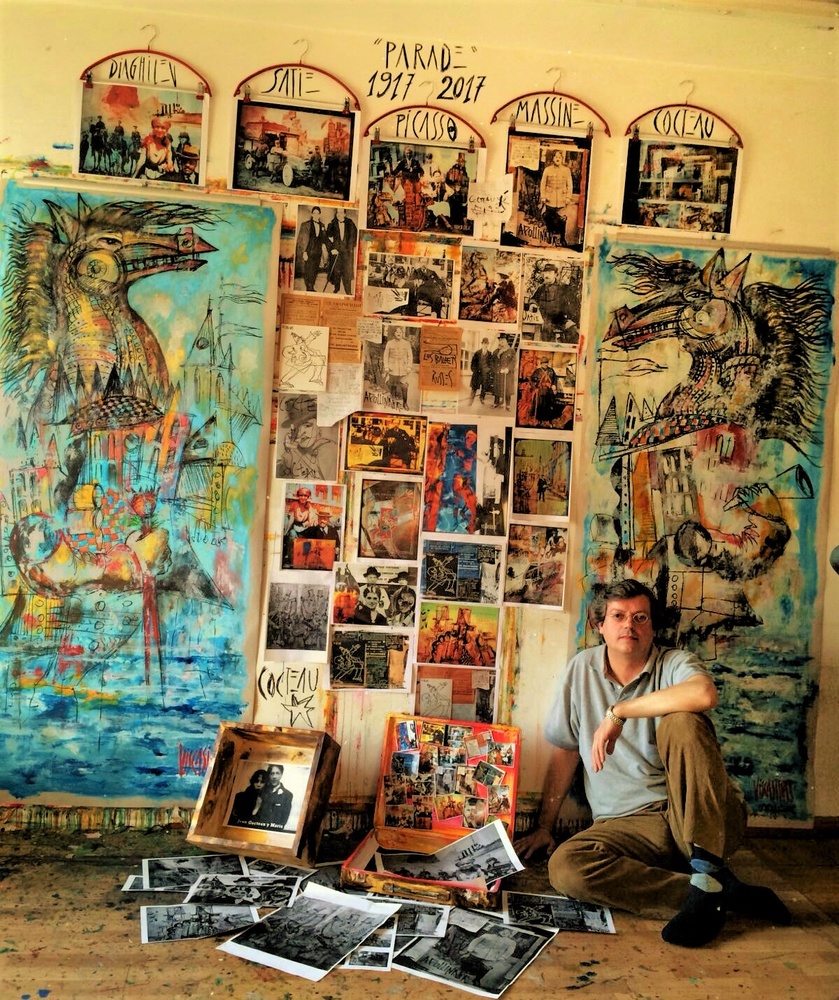
“PARADE” THE BALLETS RUSSES
Fernando Viscasillas recreates Parade Ballet
The painter inspires his last work in Parade Ballet. Composed between 1916 and 1917 by Sergei Diaghilev, is one of the most important works of its kind, among other things, because he managed to gather around him a whole generation of geniuses: Erik Satie, who composed the music , to Jean Cocteau, who was in charge of the script, going through Picasso, who designed figurines and curtains.
“Actually, this project was launched many years ago, when I was studying Fine Arts, but it was not until now that I returned to it”, explains the author. Among the reasons: this year marks the centenary of its premiere in Paris, at the Théâtre du Châtelet.
The fascination that Viscasillas has for Diaghilev’s ballet was what led him to dedicate this series of works to him. “Parade supposes a new point of view, a new concept, that entails a total rupture with the idea that had until the moment on the ballet”, explains. “Modernity is incorporated into dance with it” .
The first part of the project is a series of paintings on 2-meter papper. “The second part of the work, to be done, will be a large four-meter canvas “, he adds. “My project starts with a portrait of the ballet characters, following a kind of script that will lead us to a great final battle between the managers by the spectators. With that fight between them, in the style of the pompier and battle paintings of San Romano, by Paolo Ucello, I will close the project “.
Parade is a realistic ballet in one scene, based on a theme by Jean Cocteau. The music was done by Erik Satie, choreography by Massine, curtain, décor and costumes designed by Pablo Picasso. The first performance of Parade was at Theatre du Chatelet in Paris on May 18, 1917.Diaghilev met Picasso in the spring of 1916 when a mutual friend, Mme. Eugenia Errazuriz brought him to Picasso’s studio. It was then that Diaghilev commissioned Picasso to do the mise-en-scene for Parade. Both Picasso and Cocteau left for Rome in February of 1917, where Diaghilev’s Ballets Russes was dancing. There they met and worked with Massine.Among the costumes Picasso designed was a horse, initially with a mannequin-rider. During the dress rehearsal, the rider fell off of the horse causing the audience to laugh, so it was removed for the remaining performances. The costume for the American Girl, which Picasso had not sketched, was actually bought the day before at a sporting goods store. The costume for the Female Acrobat that Massine had added at the last minute was made of hand-painted spiral designs Picasso painted directly onto Lydia Lopoukhova’s legs.After a three year absence, Diaghilev’s Ballets Russes returned to Paris’s Theatre du Chatelet with Parade, a pioneer Cubist theatrical spectacular. Satie and Cocteau often disagreed regarding the noises that Cocteau wanted added to Satie’s scores. But, Cocteau was over ruled by Diaghilev and they were left out.When the curtain went down on Parade, the audience was violent and contradictory. It was acclaimed by many intellectuals, but the public didn’t like it. It was well ahead of its time and was never added to the regular repertoire of the Ballets Russes.In 1923, when Diaghilev wanted to restage the ballet, he asked Picasso to touch up the curtain which had been taken over by mildew. Picasso refused saying that it resembled the deteriorated frescoes of Pompeii and should remain that way!

